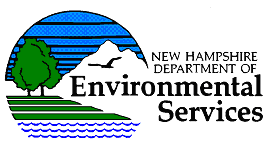

PURE CLEAN WATER

Water Filters and Carafes
For consumers wishing to treat only water used for consumption, not the whole house, inexpensive faucet‐mounted filters and freestanding carafes are often good choices. These products can do a good job of improving taste and removing lead, chlorine, chlorination by‐products, and microbes. As with other types of filters, changing the filter according to the manufacturer’s recommendations is essential for maintaining good performance.
Water Distillation and More Filtration Information
Distillation consists of boiling water and condensing the steam. It is effective at removing dissolved inorganic materials, but it is a slow process and takes considerable energy to convert a gallon of water into steam. Also, the boiling chamber becomes coated with a mineral scale. This scale is difficult to remove, generally requiring treatment with an acid.
How They Work
Distillers boil the water then cool the steam until it condenses; the resulting distilled water drips into a container. Dissolved minerals (inorganic compounds), nonvolatile organic chemicals and particulates do not evaporate with the water and are left in the boiling tanks. The steam is cooled into purified water.
Effective at removing:
Dissolved solids, metals such as lead and iron, nitrates, hardness, which is mainly calcium and magnesium, and particles. Most bacteria and some viruses are killed by either the high temperatures or are separated from the water as the steam rises.
May help with:
Cloudy, turbid water; chlorine
Ineffective against:
Pesticides and volatile organic chemicals such as chloroform and benzene.
Risks:
-
Volatile organic chemicals and other contaminants that vaporize at or below the boiling point of water can be collected and concentrated in the treated water.
-
Systems are available that will counter this problem.
-
Although the distilled or purified water container is relatively free of non‐volatile contaminants, bacteria may grow in the storage container.
-
The unit often gets very hot and may pose a contact hazard.
Additional Information
If you are considering a home treatment device, always look for one that meets the requirements of the National Sanitation Foundation (NSF) Standards. NSF Standard #53 applies to water treatment devices used to reduce health risks.
Some people may be more vulnerable to contaminants in drinking water than the general population. Immuno‐compromised persons, such as persons with cancer undergoing chemotherapy, persons who have undergone organ transplants, people with HIV/AIDS or other immune system disorders, some elderly and infants can be particularly at risk from infections. These people should seek advice about drinking water from their health care providers. EPA/CDC guidelines on appropriate means to lessen the risk of infection by Cryptosporidium and other microbiological contaminants are available from the Safe Drinking Water Hotline (1‐800‐426‐4791).
Your water should be crystal clear and free from chemicals, odors, bad tastes and hardness. However, water quality varies from home to home, and there are many common water problems that can cause your water to appear cloudy, have a bad smell or taste, stain and water-spot fixtures, or even shorten the life of your pipes and appliances.
Hartley Well Drilling is committed to delivering to all of our customers, safe, clean drinking water that is free from impurities. We offer filtration and water conditioning solutions for every type of situation. From iron to arsenic, sulfur to radon, hardness to acidity—whatever the problem, we have the solution.

















